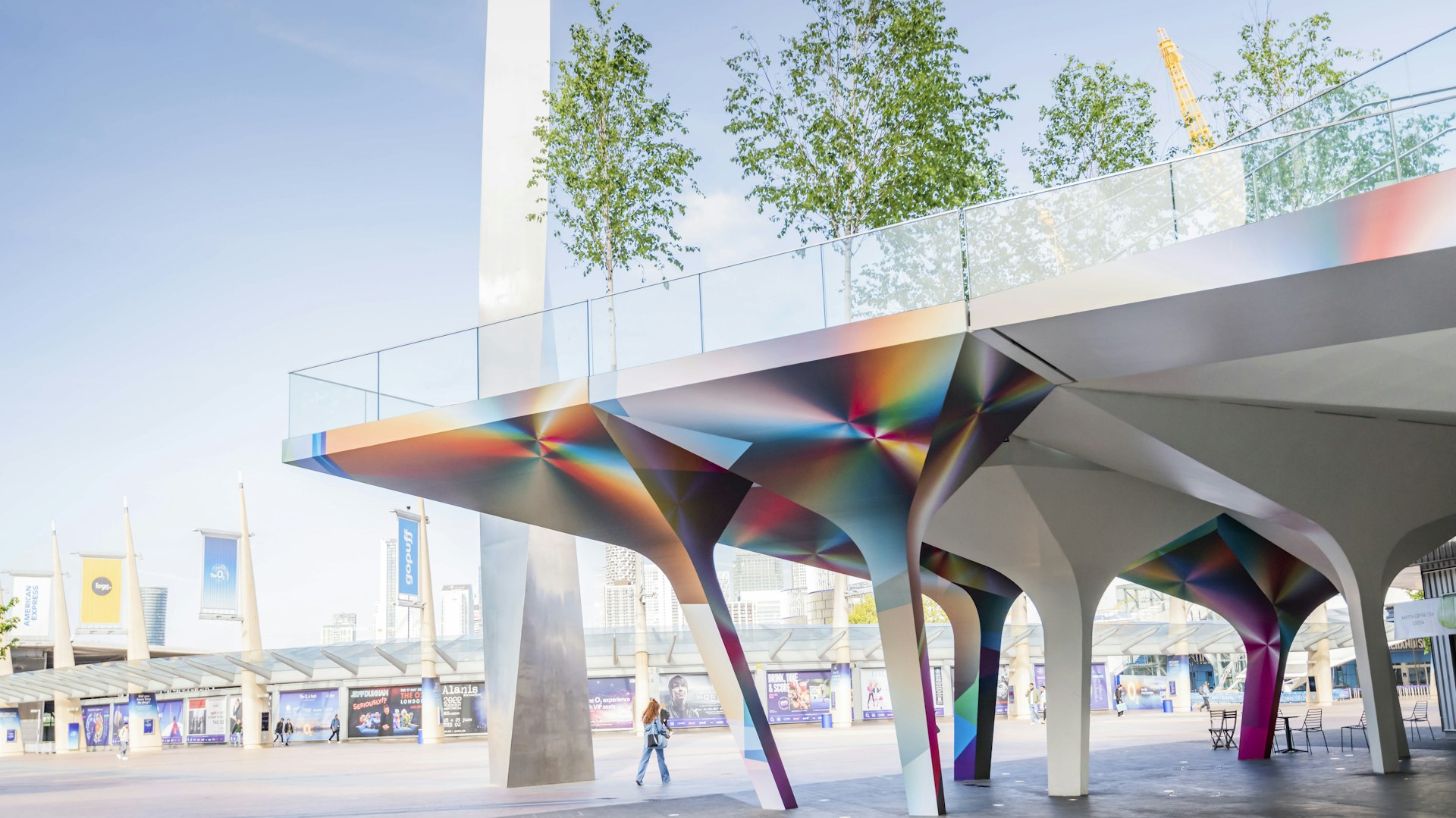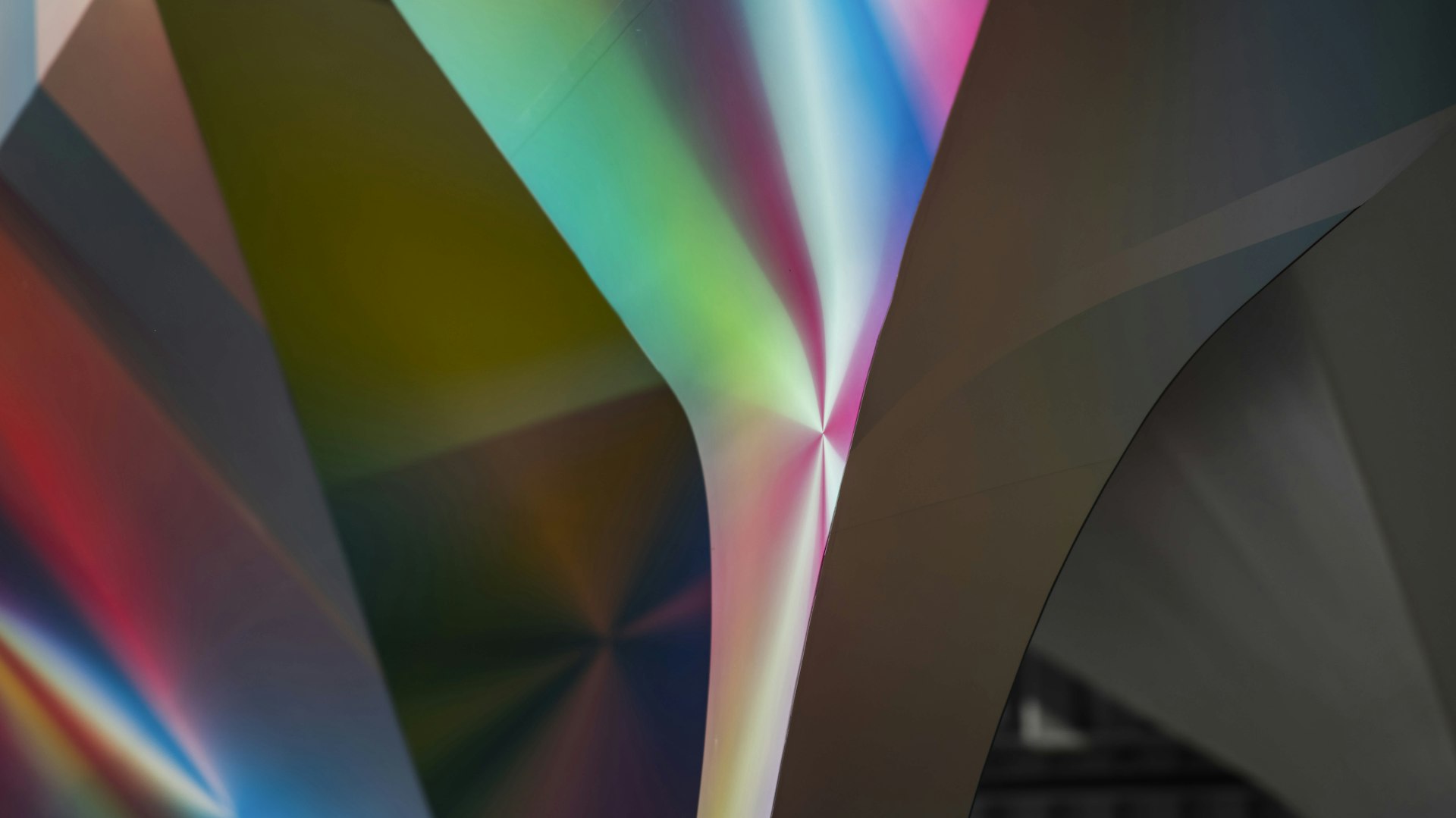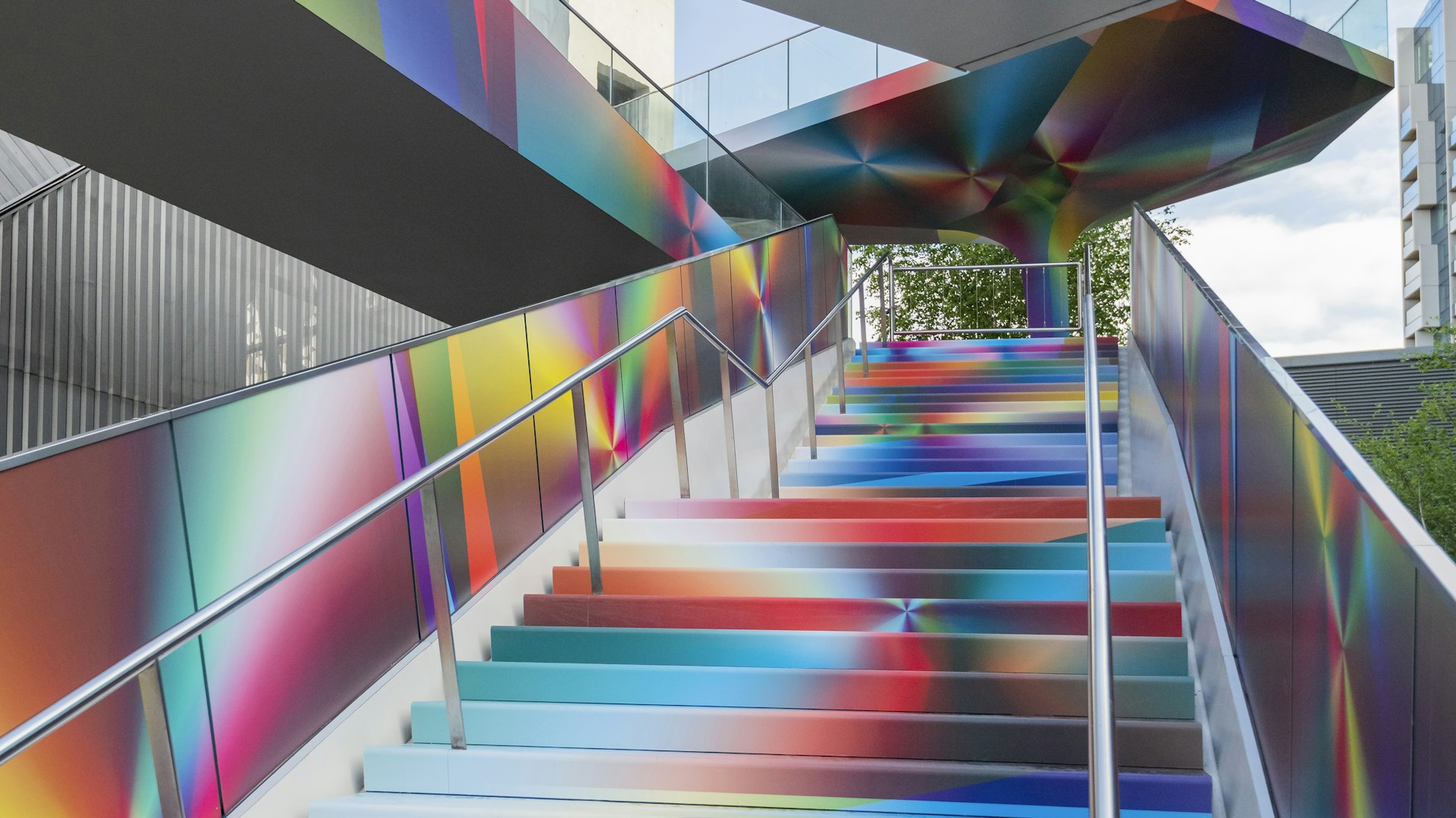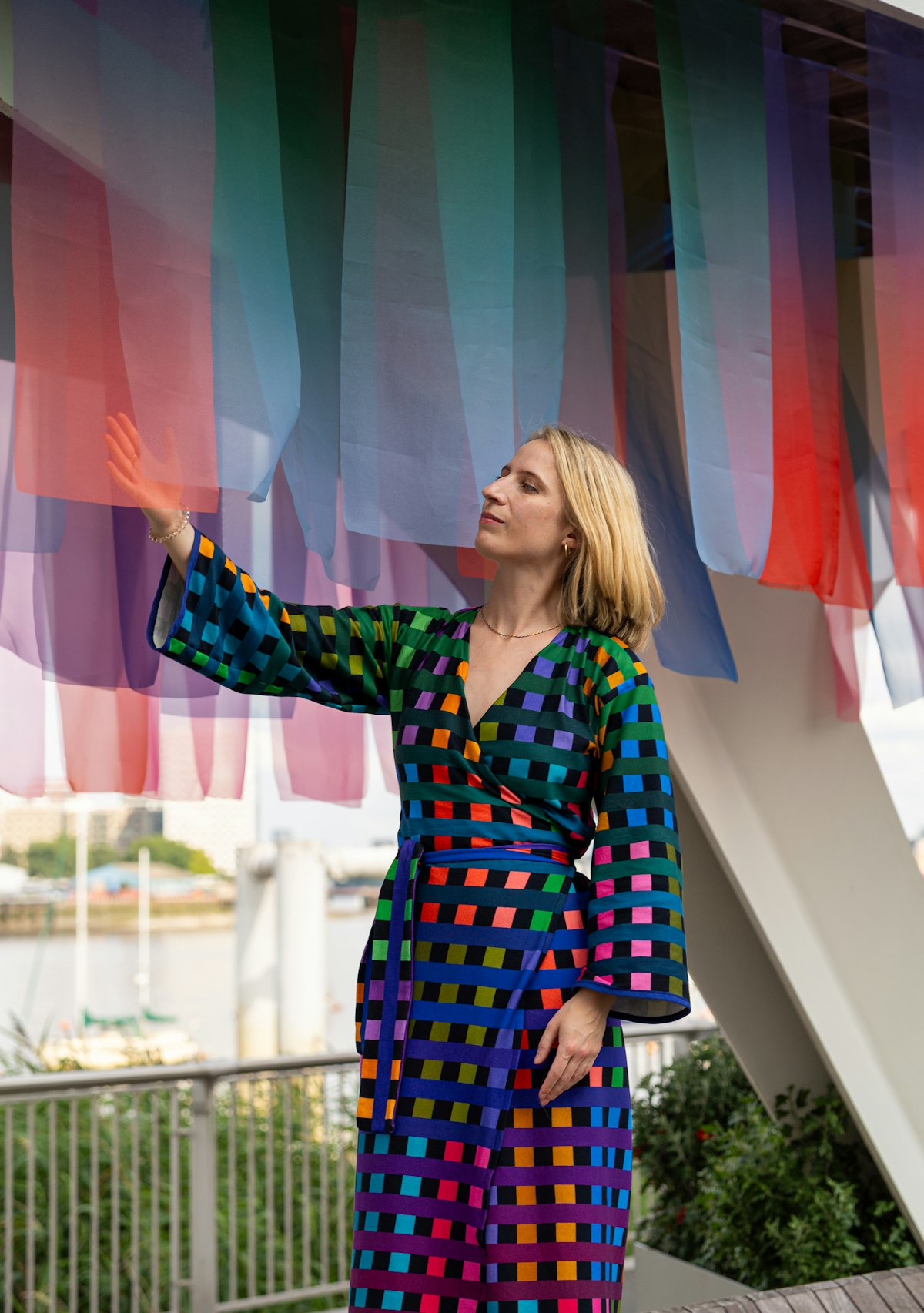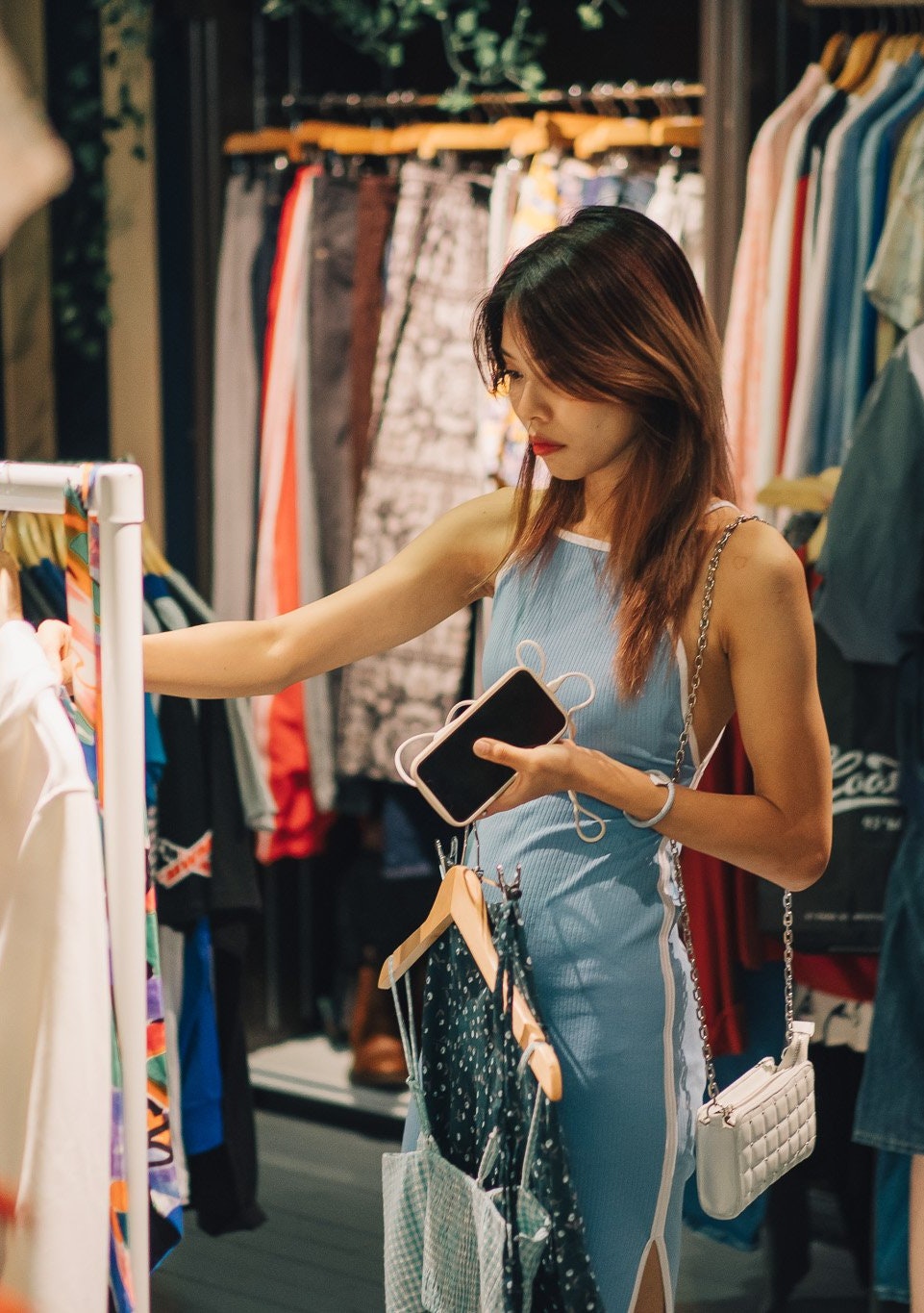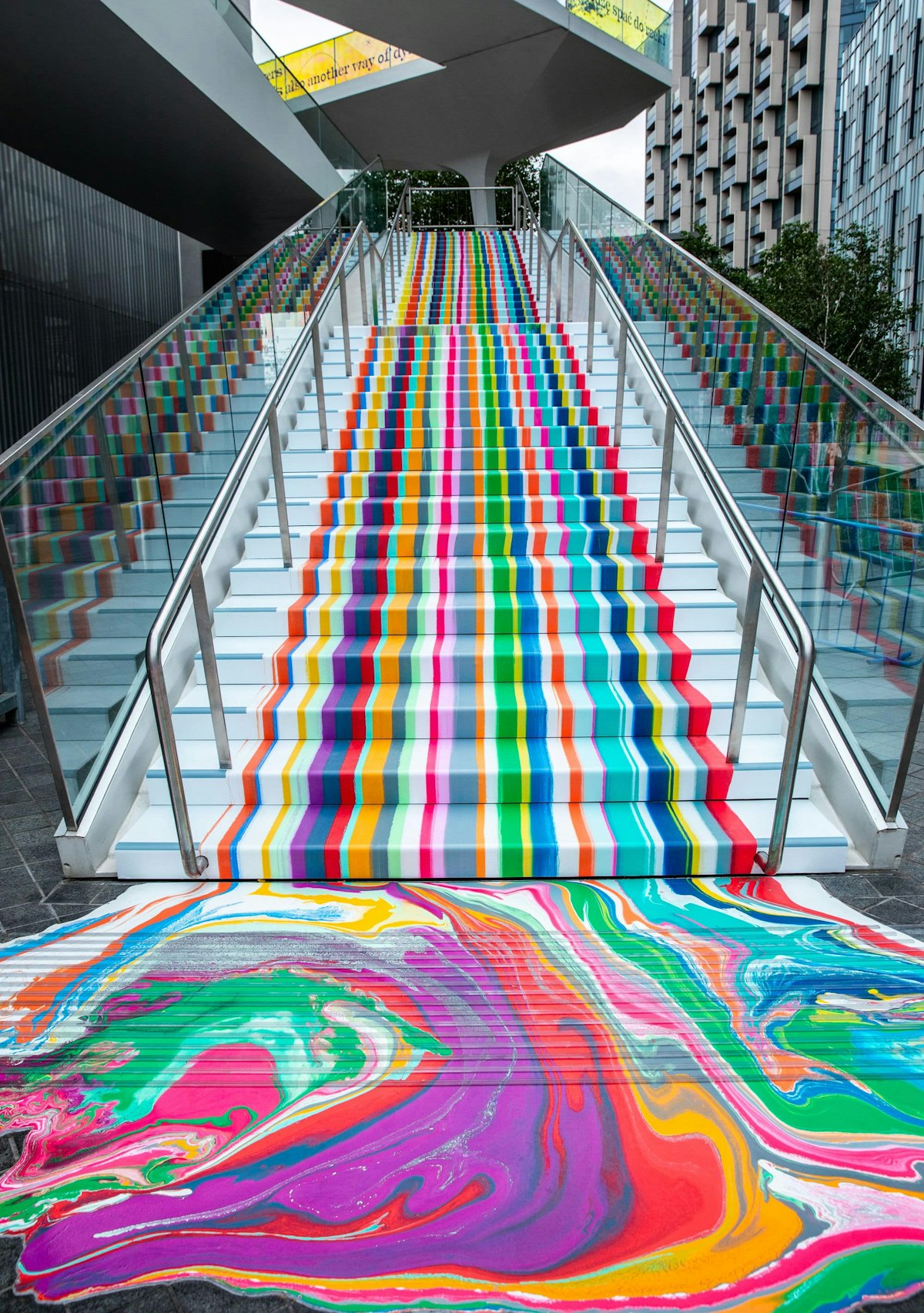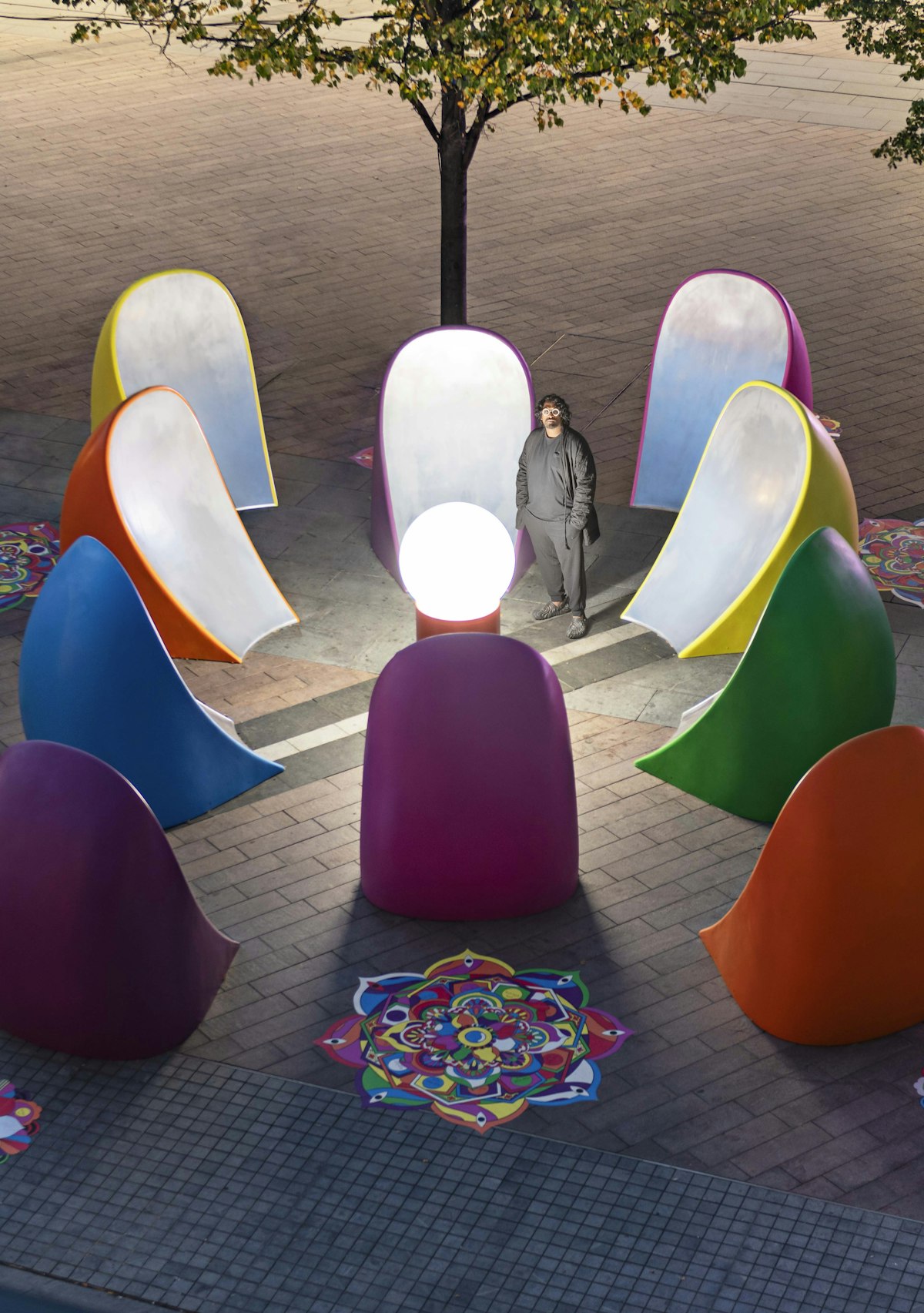
Light is a Reason for Life
Street artist, colour fanatic and artist of the moment, Felipe Pantone explains why his new installation 'Quick Tide' will bring dynamism to The Tide.
“Colour is affected by many things,” says the artist Felipe Pantone, “whether it’s a juxtaposition or a reflection, colour is really happening.” Fittingly, Felipe and I are sat talking in Design District’s luxurious Salon, which is drenched floor to ceiling in a deep wine red; from the immaculate burgundy carpet through to the claret-coloured armchairs and crimson sofa. It’s only the modern horizontal windows that remind us we are not, in fact, on one of David Lynch’s sets, but in a member’s lounge at the heart of the Design District.
Felipe’s body of work playfully balances colour and geometry with digital optical illusions, and subverts the relationship between art and its environs, moving fluidly from the street to the gallery and back again. His first UK-based outdoor installation, Quick Tide, will land on the Peninsula this May, transforming the public walkway into a large-scale installation where historic analog styles collide with a digital future, bathing the surrounding facades in swathes of vibrant colour.
Quick Tide draws inspiration from his Subtractive Variability series, which experiments with overlapping layers of cyan, magenta and yellow to show the dynamic potential of these three process colours – how the slightest displacement of one can dramatically change the others. The installation is made from a mixture of transparent and opaque vinyl to transform the angular shapes of The Tide into a vivid creative environment. Visible from both the upper and ground level, the artwork will change dramatically depending on the time of day and viewers’ locations.
For a man making such large and colourful work, in person Felipe is almost understated. He enters the room dressed in his signature black, chatting with easy charm. It’s the first time I’ve been able to see his face. Due to the nature of his work he prefers to stay anonymous and in all portraits his face is obscured, meaning a pre-interview snoop tells me nothing about who I’m about to meet.
This need for anonymity dates back to Felipe’s early days as a graffiti artist in Valencia. Born in Buenos Aires, he and his family moved back and forth between the Argentinian capital and Spain before settling in the latter when he was 10. “My mum used to say that moving schools every half year would be really good for my personality,” he says. Maybe so, but it also left him without a fixed community. So by the age of 12 he found his own in Valencia’s local graffiti scene, where he could express himself artistically and “be free”.
Although his work is clearly rooted in the unfettered rawness of the streets, Felipe does not consider graffiti to be true art. Instead, he thinks of it as a game where crews or individuals compete to express the most cutting-edge styles at the largest scale possible. His art, on the other hand, (the work that sits in a gallery) combines the ephemerality of graffiti with kinetic sculpture and a fascination with colour, in particular how the displacement of the light spectrum can impact colour through the use of repetition, geometric shapes, optical patterns and jagged grids.
“"The less face you show the better,” he says. “I want people to focus on what i am doing with my art."”
The origins of kinetics can be traced back to the Impressionist movement, where artists like Monet and Degas breathed life into painting by the movement of human figures. Later in the 20th century, kinetic art evolved into three dimensions, as artists like Gabo and Calder exploited physical movement to inform their oscillations and mobiles. Then, during the 60s, linchpins like Bridget Riley used geometric shapes to distort the viewer’s perception.
Felipe draws on such techniques to create a stylised picture and a record of the present day, a time that he believes is “one of the most exciting and dynamic ever,” due to the pace and capabilities of modern technology. To ground his work in the present, he uses “elements that would not make sense 50 years ago or 50 years in the future.”
In some artworks, the viewer witnesses these changes in abstract digital manipulations printed on canvas. In some, transparent chromatic discs are layered one on top of the other on a mechanism that rotates them at varying speeds, revealing different tones as the layers of colour interact. In others, opaque acrylic discs hang in large mobiles, the colour shifting depending on where the viewer stands in relation to the sculpture. Though he’s certain his work “will look very old and outdated” further down the line, he’s adamant about depicting graphics or evoking feelings that are emblematic of the speed and chaos of today’s digital era.
While these may be dynamic times, they are also intensely political, and so it’s perhaps unusual that Felipe purposely avoids social or political commentary in his work. There are no hints of the toll that digital technology is taking on our attention spans or allusions to the wonders/horrors of the impending metaverse. Instead he leaves his work entirely open to the viewer’s interpretation: whatever associations we have with this digital age play out in a way that makes sense only to us. “All I want to do is to convey a sense of the present,” he says. “I want the viewer to feel that what they’re seeing is a representation of present times.”
Felipe’s own life is not without its share of speed and chaos. He has built a significant global following and exhibited around the world, from the Monaco F1 Grand Prix racetrack with Alpine to exhibitions at the Palais de Tokyo in Paris. “From 2015 to 2019, I was travelling non-stop like a DJ without going home,” he says. “From Bali to Atlanta to Japan. It was stupid. Too much. Very tiring.”
When lockdown hit, Felipe welcomed the chance to move away from mural work and immersed himself in his fine art practice. “I reached the point where I had tried everything I wanted to. I didn’t have much else to experiment with at that point and I was super ready to go back to the studio.” Quick Tide is one of many new large pieces to come out of this fresh period of experimentation.
While the sheer scale of Felipe’s work is a statement in and of itself, it’s his use of colour that really sets him apart from his contemporaries. He expertly understands how it can be used to trigger moods and emotions. He learned this from the best, working under the legendary Venezuelan artist Carlos Cruz-Diez, widely understood to be one of the greatest creative minds of the 20th century. “He was my favourite artist even before I got to meet him,” says Felipe, who interned for the kinetic art master for a month in Panama City. He describes it as “a really, really enriching experience that became so important to the way I perceive colour. He taught me that colour is alive, it’s always changing.”
He gestures to the room around us, then points to the rich red carpet, which now looks more orange in the afternoon light pouring in from outside. “Colour is everywhere in my work,” he says. “It’s a reason for light, and light is a reason for life.”
Quick Tide is showing on The Tide from May 2022 to May 2023.

